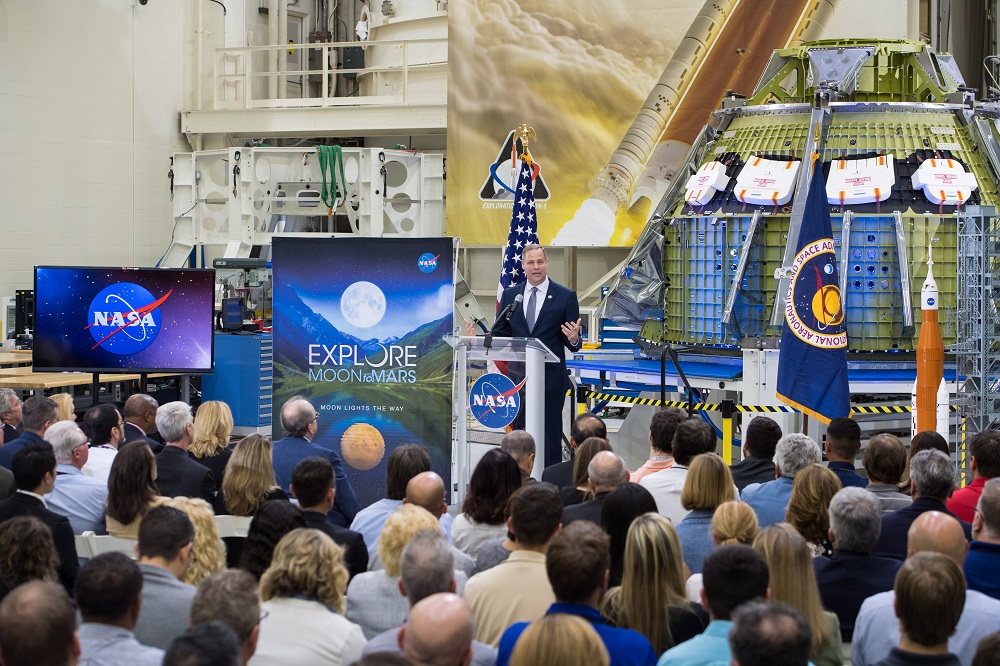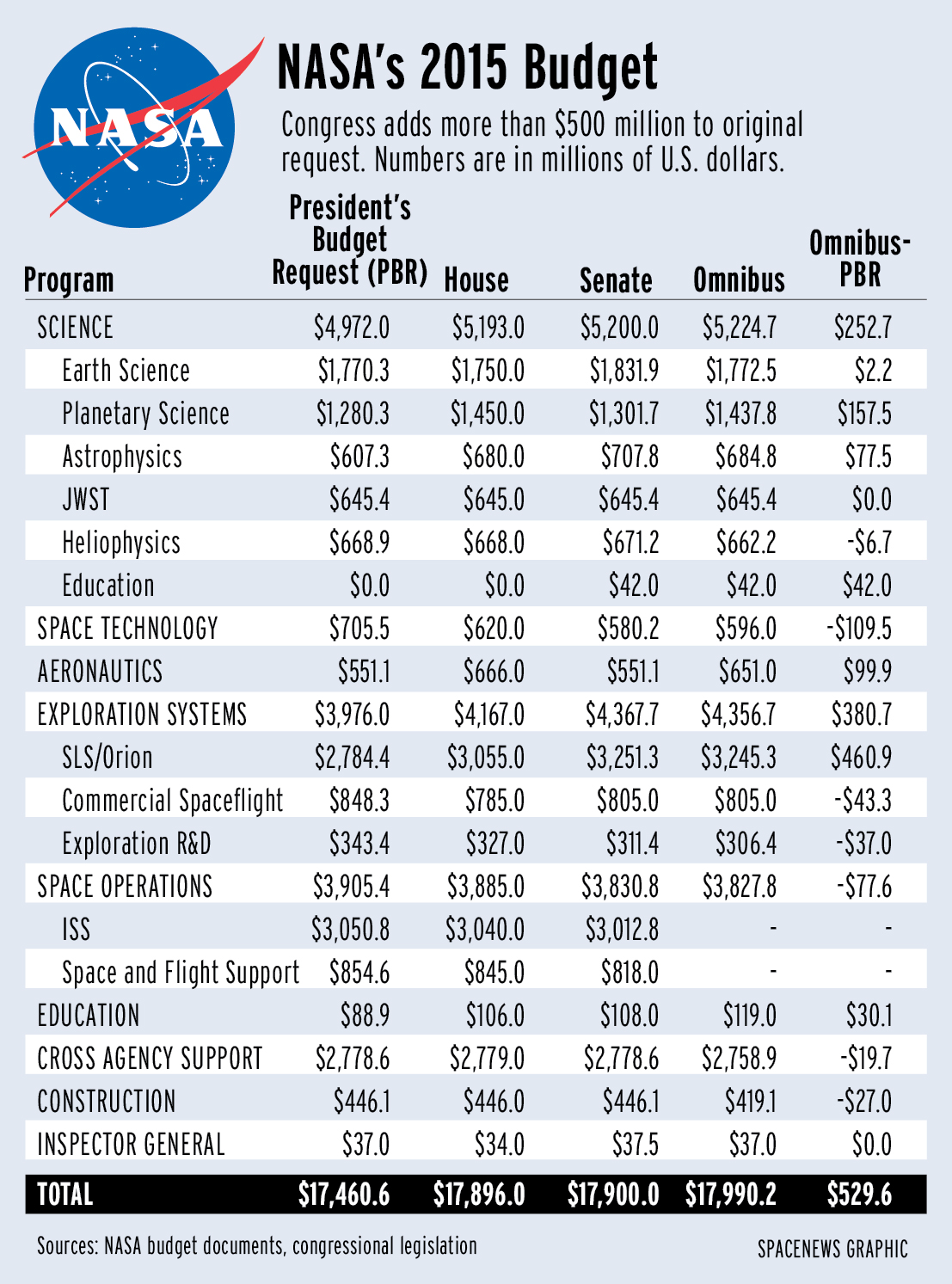

We can't start new programs when on a CR, without an exception." "If we're trying to grow on budget to launch more stuff, and we're on a CR, it's our budget from last year, so we can't grow.
#NASAS BUDGET FREE#
"That feels like the weight of the world on my shoulders, trying to get stability in Congress," Free said.

"And I'm sure they tell you, they need more than this to execute." Congressional prioritiesįree also said Congress' inability to pass a timely budget, and its reliance on continuing resolutions (CR), has made starting new programs to get the Artemis program moving difficult. "A lot of the program managers are here in the room," he said of major components of the Artemis plan, including the SLS rocket, Orion spacecraft, and lunar lander. While it may provide a nice way station capability, the Gateway is unnecessary for actual lunar landings.ĭuring his presentation, Free warned that even with the president's budget proposal, there probably was not enough funding to carry out the Artemis program as conceived, which calls for an initial human landing in 2025 (which almost certainly will slip two or three years), and a follow-up landing in 2028 (again, slips are expected). NASA's budget also proposes to spend $4 billion for a Lunar Gateway that will not be used during the first lunar landing. It is not clear why NASA needs to spend as much money on a flight-proven rocket as it does on the development of two large and technically challenging human landers.Īsking during the meeting about the ongoing high costs for the SLS rocket, Free said the space agency was attempting to bring the costs down by shifting from development to operations. NASA did not award its first lunar lander contract until 2021. This $11 billion is approximately the same amount of money that NASA proposes spending on not one, but two lunar landers for humans, which are arguably as complex as the SLS rocket, which has been in development since 2011. This includes some staggering sums for the Space Launch System rocket, $11 billion, which has already been developed for this mission. During this five-year period, the space agency will spend at least $41.5 billion on the Artemis program, when there is likely to be a single human landing at most.

The space agency's chief official for human spaceflight in deep space, Jim Free, discussed the budget from fiscal year 2024 through fiscal year 2028. These concerns were highlighted this week at a meeting of NASA's Advisory Committee for Human Spaceflight. The Artemis program's budget is ballooning, and it is unclear when people will start flying to the Moon. Biden diplomats have also continued to add nations to the "Artemis Accords," with two dozen countries now participating.įor all of this support, however, there is one worrying sign. Crafted during the Trump administration, the Biden White House reaffirmed these Artemis plans within days of taking office. Perhaps most critically, for Artemis, is that in a rare show of bipartisanship, both Republicans and Democrats support NASA's plan to send humans to the Moon later this decade, at least once a year, reaching a point at which astronauts stay for 30 days at a time. The Artemis program to return humans to the Moon has an aura of inevitability now, with broad political support, robust international participation, and a successful first mission-Artemis I-under its belt.


 0 kommentar(er)
0 kommentar(er)
